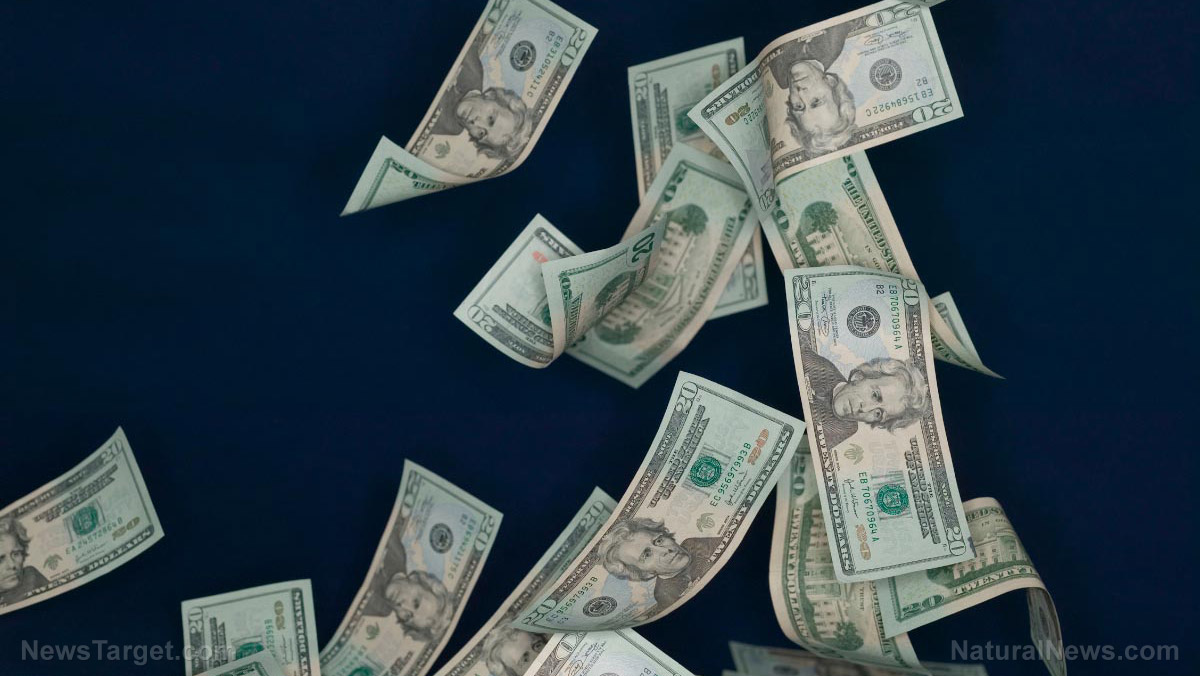Brace yourself: Ongoing Treasury bond collapse ranks among worst in market crash history – and the carnage has only just begun
10/09/2023 / By Ethan Huff

There is more trouble in fiat paradise as United States Treasury bonds plummet to their lowest level in decades – and in some cases, their lowest level ever.
According to reports, Treasury bonds with maturities of 10 years or more have plummeted 46 percent since March 2020 when the Wuhan coronavirus (COVID-19) “pandemic” was declared as cover for the hemorrhaging financial system and mini-crash that occurred around that same time.
The last time Treasury bond losses were this large was back during the dot-com bubble burst at the turn of the 21st century.
Meanwhile, the bond rout is currently worse than the one that occurred in 1981 when the 10-year yield reached a high of nearly 16 percent.
Yields are soaring because of a massive bond market sell-off, which is nearing the same intensity as what occurred during some of the worst market meltdowns this country has ever seen.
The 46 percent decline in Treasury bonds with 10-year maturities pales in comparison to the decline in 30-year bonds, which have plunged about 53 percent since the start of the scamdemic.
“Those losses are nearly in line with stock-market losses seen during the worst crashes of recent history – when equities slumped 49 percent after the dot-com bubble burst and 57 percent in the aftermath of 2008,” reports Business Insider.
“Compared with previous bond-market meltdowns, long-term Treasurys are seeing one of the most extreme undoings in history. The losses are over twice as big as those seen in 1981 when 10-year yields neared 16 percent.”
(Related: At the height of the COVID “pandemic,” now-defunct Silicon Valley Bank [SVB] stole billions from its capital clients and funneled all that money into risky Treasury bets that failed to pan out.)
Is the fiat Ponzi scheme nearing its end?
The 1981 crash came as former Federal Reserve chair Paul Volcker responded to historic inflation at that time with massive interest rate increases that eventually reached 20 percent.
Today’s interest rate hikes, albeit high for what many people today are used to, are still well below that level. Still, the incremental hikes we have been seeing over the past several years are causing a similar bond market rout that spells disaster for the current bubble markets.
Traders continue to sell Treasury bonds amid concerns about what Business Insider describes as “rebounding inflation.” This, combined with a deluge of new Treasury issuance this year, is also putting immense pressure on bond prices.
Right now, long-duration yields have climbed to levels not seen since 2007 just before the 2008 market crash. The 30-year note also just passed the five percent barrier for the first time in many decades.
Investors are expecting a similar path for the 10-year note, which right now is hovering just about 4.7 percent. In the near term, well-known investors like Bill Ackman, Ray Dalio and Bill Gross expect the 10-year note to hit five percent.
“At its recent closing low, the iShares 20+ Year US Treasury ETF (TLT) was down 50.4 percent from its all-time closing high on Aug. 4, 2020,” said Bespoke Investment Group.
“While that’s shy of the 57 percent peak to trough decline in the S&P 500 tracking ETF (SPY) during the financial crisis, it exceeds the 49.1 percent peak to trough decline experienced by SPY during the dotcom bust.”
If the Fed’s rate hikes continue, then bigger drops in Treasury prices are still possible – and the crash will only be that much bigger.
“Inflation is still the risk,” says T. Row Price bond manager Alex Obaza. “If we saw a real acceleration of inflation, that’s what you would have to have before you consider a six percent Fed funds rate.”
It will not be long now before the corrupt American financial empire ceases to exist. Learn more at Collapse.news.
Sources for this article include:
Submit a correction >>
Tagged Under:
bonds, bubble, collapse, crash, currency crash, dollar demise, economic recession, finance, finance riot, inflation, interest rates, market, market crash, money supply, pensions, risk, stock market, Treasury, Treasury bonds, Wall Street
This article may contain statements that reflect the opinion of the author
RECENT NEWS & ARTICLES
COPYRIGHT © 2022 FinanceRiot.com
All content posted on this site is protected under Free Speech. FinanceRiot.com is not responsible for content written by contributing authors. The information on this site is provided for educational and entertainment purposes only. It is not intended as a substitute for professional advice of any kind. FinanceRiot.com assumes no responsibility for the use or misuse of this material. All trademarks, registered trademarks and service marks mentioned on this site are the property of their respective owners.



















